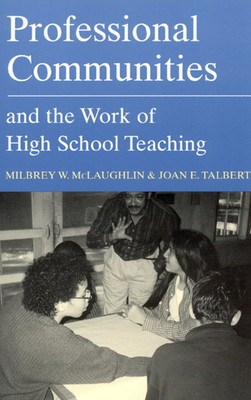
- We will send in 10–14 business days.
- Author: Milbrey W McLaughlin
- Publisher: University of Chicago Press
- ISBN-10: 0226500713
- ISBN-13: 9780226500713
- Format: 14 x 21.6 x 1.3 cm, softcover
- Language: English
- SAVE -10% with code: EXTRA
Professional Communities and the Work of High School Teaching (e-book) (used book) | bookbook.eu
Reviews
Description
American high schools have never been under more pressure to reform: student populations are more diverse than ever, resources are limited, and teachers are expected to teach to high standards for all students. While many reformers look for change at the state or district level, the authors here argue that the most local contexts--schools, departments, and communities--matter the most to how well teachers perform in the classroom and how satisfied they are professionally. Their findings--based on one of the most extensive research projects ever done on secondary teaching--show that departmental cultures play a crucial role in classroom settings and expectations. In the same school, for example, social studies teachers described their students as apathetic and unwilling to work, while English teachers described the same students as bright, interesting, and energetic.
With wide-ranging implications for educational practice and policy, this unprecedented look into teacher communities is essential reading for educators, administrators, and all those concerned with U. S. High Schools.EXTRA 10 % discount with code: EXTRA
The promotion ends in 20d.11:00:37
The discount code is valid when purchasing from 10 €. Discounts do not stack.
- Author: Milbrey W McLaughlin
- Publisher: University of Chicago Press
- ISBN-10: 0226500713
- ISBN-13: 9780226500713
- Format: 14 x 21.6 x 1.3 cm, softcover
- Language: English English
American high schools have never been under more pressure to reform: student populations are more diverse than ever, resources are limited, and teachers are expected to teach to high standards for all students. While many reformers look for change at the state or district level, the authors here argue that the most local contexts--schools, departments, and communities--matter the most to how well teachers perform in the classroom and how satisfied they are professionally. Their findings--based on one of the most extensive research projects ever done on secondary teaching--show that departmental cultures play a crucial role in classroom settings and expectations. In the same school, for example, social studies teachers described their students as apathetic and unwilling to work, while English teachers described the same students as bright, interesting, and energetic.
With wide-ranging implications for educational practice and policy, this unprecedented look into teacher communities is essential reading for educators, administrators, and all those concerned with U. S. High Schools.

Reviews